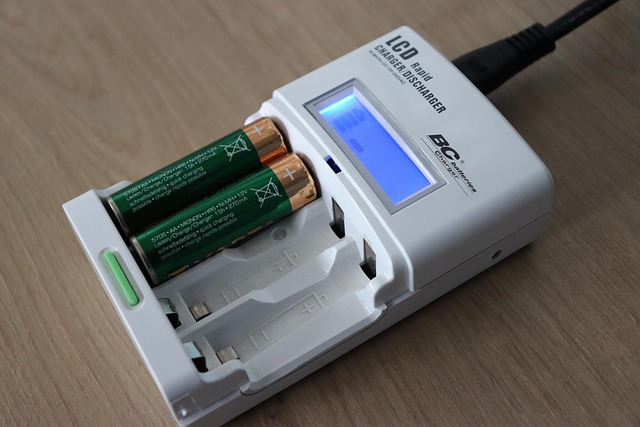
Beyond Backup: Innovative Uses of Battery Storage in Everyday Life
The surge in interest surrounding renewable energy and sustainable living has paved the way for a myriad of innovative technologies. Among these innovations, battery storage has emerged as a game-changer, not only for enhancing the efficiency of energy usage but also for allowing consumers to lead more sustainable lives. While battery storage is often primarily associated with energy backup solutions, its applications extend far beyond this traditional role. This article explores the various innovative uses of battery storage in everyday life, showcasing its potential to revolutionize how we live, work, and interact with our environment.
Understanding Battery Storage
Before delving into innovative applications, it is essential to understand what battery storage entails. Battery storage systems utilize rechargeable batteries to store excess energy for future use. This stored energy can then be utilized during peak demand times, when energy costs are typically higher, or when renewable sources are unavailable, such as at night for solar energy users.
Battery storage systems vary widely, from small-scale home batteries to large-scale installations that support entire communities. The advancements in battery technology, particularly in lithium-ion and newer alternatives like solid-state batteries, have improved the efficiency, lifespan, and accessibility of these systems.
Home Energy Management and Smart Living
One of the most prominent uses of battery storage is in residential energy management. Homeowners are increasingly turning to battery systems as part of an integrated energy strategy. When paired with solar panels, battery storage allows homes to store captured solar energy for later use, reducing reliance on the grid.
Moreover, innovations in smart home technology allow homeowners to optimize their energy consumption actively. Smart energy management systems can analyze consumption patterns and automatically decide when to draw from battery storage, reducing energy costs significantly. These systems also enable homeowners to utilize stored energy during peak hours, when electricity rates are at their highest, leading to substantial savings.
Electric Vehicles as Mobile Battery Banks
Electric vehicles (EVs) have found their place not only as eco-friendly modes of transportation but also as versatile battery storage units. Emerging bi-directional charging technology enables EVs to serve as mobile energy banks. This means that your electric vehicle can discharge electricity back into your home or feed excess power back into the grid.
The benefits of this two-way flow are astounding. Imagine being able to power your home during outages or using your vehicle to charge other devices while on the road. Furthermore, this can foster a new business model in which EV owners get paid for the power they send back to the grid, incentivizing the adoption of electric vehicles.
Battery Storage in Emergency Preparedness
Natural disasters and unexpected power outages can wreak havoc on communities. Battery storage systems can play a vital role in emergency preparedness. Many homeowners are investing in battery systems not only to lower their electricity bills but also as a means of ensuring uninterrupted power during emergencies.
In areas prone to extreme weather events, such as hurricanes or wildfires, having a reliable power source becomes crucial. Households equipped with battery storage can run essential appliances, such as refrigerators and medical devices, during power disruptions. Community-based battery storage systems can further enhance resilience, providing power hubs in times of crisis.
Enhancing Grid Resilience
Battery storage technology is not just beneficial for individual consumers; it can also enhance the resilience of the entire grid. Utilities are increasingly integrating large-scale battery storage systems to manage supply and demand more effectively. These installations serve as buffers, absorbing excess energy during periods of low demand and discharging it during high demand.
This approach helps stabilize electricity prices, reduces the risk of blackouts, and enables a greater adoption of renewable energy. As more renewable energy sources come online, the grid becomes vulnerable to fluctuations in availability. Battery storage helps to mitigate these fluctuations and allows for smoother integration of renewables into the energy mix.
The Role of Battery Storage in Urban Infrastructure
Cities are increasingly turning to battery storage solutions for various infrastructure projects. Transportation hubs, public spaces, and critical facilities are exploring battery systems to improve energy efficiency and sustainability. For instance, train stations and airports are implementing battery storage to manage energy demands associated with electric transportation systems.
Moreover, streetlights powered by battery storage systems can utilize solar energy collected during the day, providing illumination at night without adding to energy costs. These examples highlight how cities can be made smarter and more sustainable through the integration of battery storage technologies.
Sustainable Agriculture and Battery Storage
The agricultural sector is also taking advantage of battery storage systems. Farmers are increasingly utilizing battery technology to store energy generated from renewable sources, like wind and solar, to power irrigation systems, greenhouses, and even equipment. By doing so, they can reduce costs and improve efficiency, contributing to more sustainable farming practices.
Another innovative application involves the use of battery storage in refrigerated transport. By utilizing electric vehicles powered by stored renewable energy, the agricultural industry can enhance produce freshness while minimizing carbon footprints. This not only helps in preserving perishable goods but also promotes environmental sustainability.
The Future of Battery Storage: Innovation and Community Empowerment
As technology continues to advance, the future of battery storage looks promising and innovative. The democratization of renewable energy through battery storage has the potential to empower communities, enabling them to take control of their energy sources and foster energy independence.
Community solar projects that include battery storage are emerging in various regions, allowing residents to share the costs and benefits of renewable energy. This community-based approach promotes sustainability, equity, and environmental consciousness.
Conclusion
Battery storage systems are no longer just a safety net during power outages. Instead, they are becoming cornerstones of modern living, with applications extending across different sectors of our daily lives—from home energy management, emergency preparedness, urban infrastructure, to agriculture. As technology continues to evolve, the potential uses for battery storage will likely expand, fundamentally altering the way we think about energy. As communities embrace these innovations, we can look forward to a cleaner, more resilient, and sustainable future for all.


